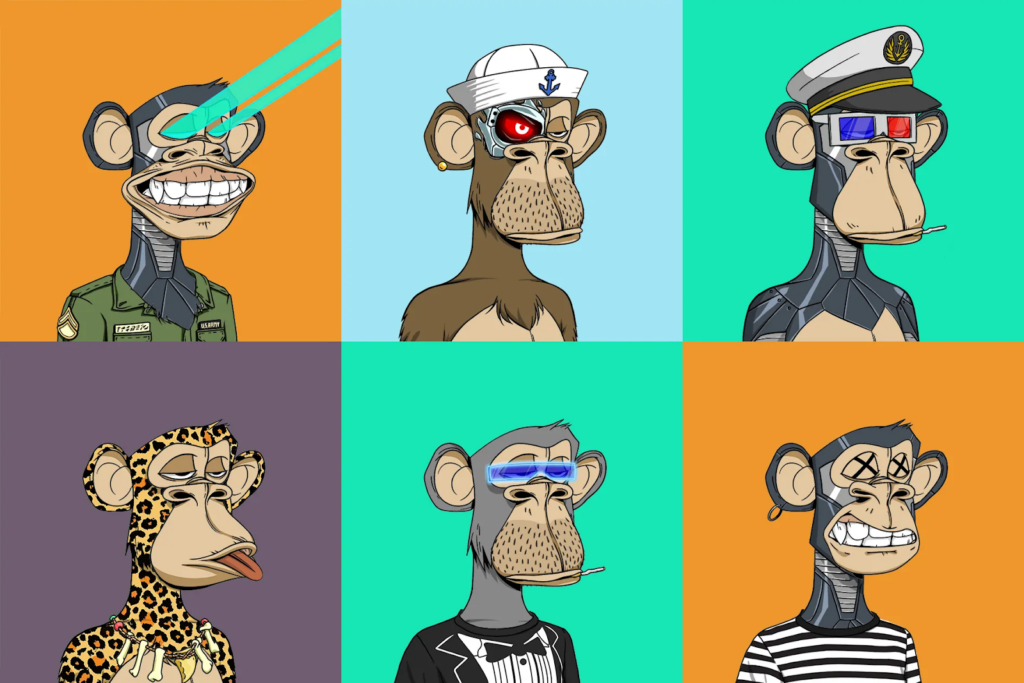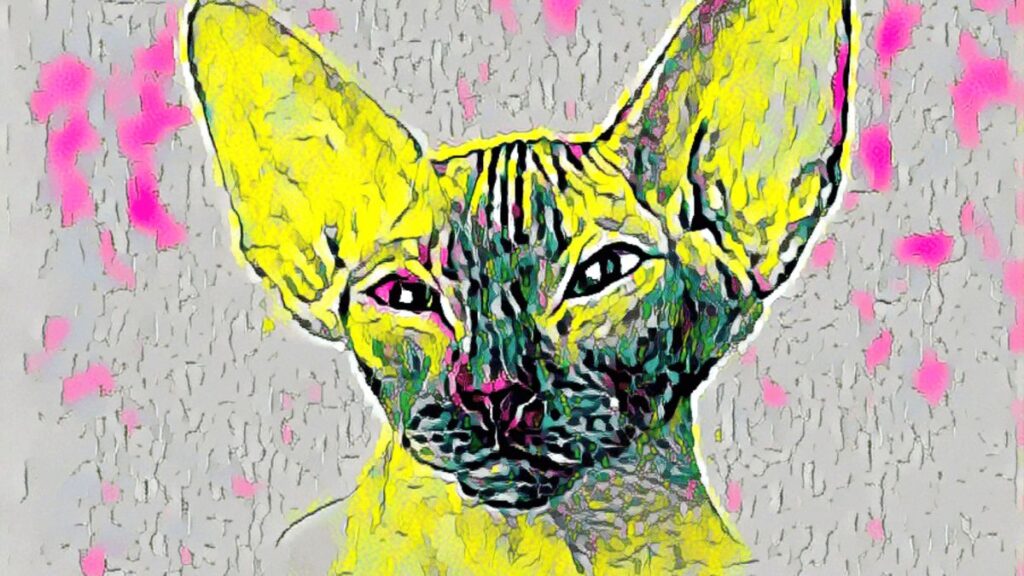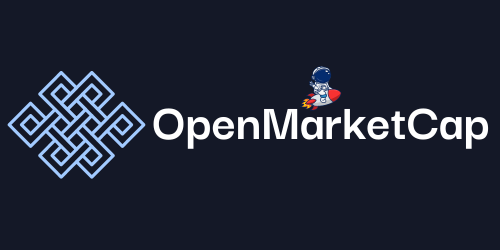As the world of digital media continues to grow, a new form of art – NFT (Non-Fungible Tokens). Art has become an increasingly popular trend. Unlike traditional art forms which are bought and sold in physical markets, this innovative medium offers artists and collectors unique ways to create, purchase or trade artwork via the internet. This rising phenomenon is taking both online spaces as well as auction houses by storm with its potential for transforming how we view artistic creation from not only creative expression but also financial investment perspective. It brings together all three major players in the market: buyers, sellers, and creators, allowing them to connect on multiple levels that would have been previously impossible due solely to a tangible marketplace model alone. It will be interesting to see what changes occur when these platforms develop even more within their domain!
Short Summary
- NFT art is a form of digital artwork utilizing blockchain technology to enable artists to monetize their work and create unique digital assets.
- Tokenization of Digital Art involves converting artwork into tokens stored on a blockchain platform, with varying costs depending on complexity.
- NFT art provides numerous benefits for artists such as new revenue streams, global reach, creative freedom. Challenges include environmental impact & market volatility.
Understanding NFT Art
Digital artists can create digital works of art and tokenize them into non-fungible tokens (NFTs), enabling legal ownership to be bought on various NFT marketplaces. As opposed to traditional art which exists in the physical world, these digitally crafted pieces are unique creations that only one person is able to possess at any given moment due to their blockchain technology nature and lack of being interchangeable with an asset equal value within the artistic realm. This gives those creators a whole new avenue for selling their artwork along with establishing immutable proof of authenticity, something once thought impossible prior!
The Role of Blockchain Technology
In the NFT art world, Blockchain technology is vital for creating and verifying digital art in a highly safe manner. It facilitates artists to have more control over their work than ever before by eliminating certain middlemen who otherwise take away profits from sales. This also presents investors with chances to support developing talents in either physical or digital artwork while expecting potential returns on investments through value growth of these works. Thus, owning a Digital Wallet which can store and manage the artistic assets purchased online becomes compulsory for participating parties (i.e., both creators as well as collectors) within this market of virtual creations that bridge into reality due to modern-day blockchain technology revolutionizing an age-old industry called Art World globally!
Tokenization of Digital Art
The process of tokenizing digital art to create non-fungible tokens (NFTs) that provide ownership and establish NFT collections is referred to as ‘minting’. Artists can use a cryptocurrency platform such as Blockchain, for which the minting fee ranges from $80-$1000 depending on the artwork’s complexity. By creating these unique digital assets in this manner, artists have security when selling their creations digitally with minimal fees involved. Through minting an NFT they are able to assign each fine art piece its own dedicated identity making it possible for them to monetize off of their artwork and other related products while still maintaining control over how and where those works are used or displayed.
Entering the NFT Art World: A Guide for Artists
As an artist entering the NFT art world, tokenizing digital artwork and minting on a blockchain platform are crucial steps to consider. This opens up new revenue streams for creators and provides access to global audiences plus creative freedom within this space. Nevertheless, environmental impact concerns, copyright protections worries, as well as market fluctuations should be taken into account when selling digitally-crafted pieces via NFTs or other markets in the arts universe. As virtual reality/gaming integrations with such works come onto play along with ever changing trends of the domain, preparation is needed from creatives who want success out of it all.
Creating Digital Art
Digital art has grown to encompass a wide variety of creative practices and expressions made possible through the use of digital technology. Digital artists create unique pieces by harnessing tools such as Adobe Photoshop, Illustrator, After Effects, Blender or Maya for creating NFTs. Selling digital art online is now in high demand and so many are looking into ways to make their artwork stand out from others on this competitive market. Traditional techniques like sketching paintings sculpturing can be combined with modern technologies too for even more individualistic creations that will boost any artist’s presence in the marketplace. Art lovers across every genre must stay updated about these new trends if they wish to remain successful sellers today!
Minting Your Artwork
When it comes to minting digital artwork on a blockchain platform, an NFT is created which represents the art’s original digital file. This provides security and authenticity for this type of asset. Creating its own unique token on the network that can be bought, sold or traded.
The pricing for this process may differ depending on how complex and exclusive the piece is as well as what specific system it’s being put through. Although there might be considerable costs associated with minting, skilled artists will discover these are made up of profits gained from selling their NFT artwork in the long run.

Listing and Selling on NFT Marketplaces
Once an artist has produced and minted their NFT artwork, it’s time to list and offer the digital art for sale on popular marketplaces such as OpenSea, SuperRare, and Nifty Gateway. These networks give creators a global platform in order to facilitate transactions of their creative works.
To increase sales potential within the world of nft art work, artists must conduct research so they can discover which online platform is most suitable according to different needs or genre-specific types like digital watermarking or blockchain authentication that secures rights for makers. With marketing strategically planned by choosing a successful route within this sector, maximum success should be achieved with any type of crafted visual piece set up into the marketplace.
Top NFT Artists and Their Impact
As the field of NFT art continues to grow, numerous creatives have gained recognition for their captivating digital designs. Artists such as FEWOCIOUS, SNOWFRO, Trevor Jones and TYLERXHOBBS are now some of the most profitable in this realm, a success that has pushed others onto trying out this new medium. They’ve made an imprint on how individuals perceive modern artwork. Because by showcasing what can be done with these tools, it’s clear there is potential both aesthetically and economically in creating within this space. Overall, their impact has forever changed our perception of digital creativity while setting up successful financial opportunities from its sale.
Pioneers of the NFT Art Movement
PAK and Mattdesl are two of the most influential NFT artists, their artworks having a total worth beyond $55 million. They have motivated other digital creatives to explore this new form of artwork with its own set of possibilities which has also caught the eye of investors and collectors alike. These pioneers indicate that there is a real craving for NFTs within both traditional as well as modernized sectors of the art world. By going far beyond what would normally be expected when it comes to creating something unique, they gave rise to additional digital innovators participating in different aspects related to non-fungible tokens too.
Rising Stars in the NFT Art Scene
As the NFT art world continues to expand, more and more artists are joining in with their own digital creations. Xcopy, Beeple, Trevor Jones and Coldie have been making a name for themselves as up-and-coming talent within this movement. Pushing boundaries of artistic expression through new creative avenues in the digital age. The future looks bright too, there is an increasingly large community of both creators and collectors contributing to its growth, which promises much potential ahead!

Advantages and Challenges of NFT Art
NFT art has made it possible for artists to monetize their digital creations and truly own them, as well as giving collectors a new medium in which to invest. Issues such as environmental effects, copyright regulation & market instability challenge both the creators and patrons alike. Despite this adversity though, there is no denying that NFTs provide artistic freedom on an international level – with proper developments moving forward in technology & legislation around these topics accordingly. The possibilities of what could happen within this realm are limitless!
Benefits for Artists
Artists are finding great potential for creativity and financial success by utilizing digital art tokenized as NFTs. Through creating unique pieces to be bought on various marketplaces, they can gain new opportunities in the online space while also benefitting from royalties whenever their work is resold. This combination of creative freedom and monetary reward offers an attractive proposition for those seeking out fresh avenues within the field of digital artistry.
Challenges and Concerns
The NFT art market presents a variety of advantages, yet there are also worries that need addressing. An example is the environmental cost tied to blockchain technology used for creating and preserving Non-Fungible Tokens (NFTs). Developers strive to create more eco-friendly alternatives, but this still needs attention. Copyright provisions currently don’t exist, which puts artists’ rights in danger if their digital artwork ends up misused or counterfeited. Because this area has few regulatory standards as well as an unsteady marketplace could leave both creators and investors vulnerable to fraudulence along with other issues like scams.
Future of NFT Art: Trends and Predictions
As the future of the NFT art world continues to develop, it is essential for artists, collectors and investors to keep up with these changes in order to take advantage of the abundant opportunities presented. Traditional artwork markets have also been challenged by this rise in popularity. Thus museums and galleries can provide a platform where digital creations from talented artists are showcased and experienced firsthand.
The integration between virtual reality experiences along with gaming platforms open doors that could propel demand within both the collector’s market as well as the artist industries alike. We look forward to seeing more creative applications coupled with meaningful partnerships progress over time that will help shape our industry even greater than before!
Increasing awareness regarding what’s currently happening in this ever-evolving field amongst various stakeholders is key, consequently enabling them leverage existing knowledge into fresh ideas leading towards a prosperous future full potential possibilities around art creation alongside global appreciation too!
Integration with Virtual Reality and Gaming
NFT art has the potential to transform digital gaming platforms with its new level of value and ownership for virtual assets. With NFTs, players can collect and trade in-game items such as weapons, armor or even complete universes – giving them a sense of authenticity through their ability to own these pieces.
This opens up enormous opportunities for game developers who may benefit from selling virtual creations via crypto currencies on various platforms. Blurring the lines between tech, art and games thus paving the way towards redefining future experiences related to reality &digitality alike while attributing worthiness & value into it all!
Evolving Art Market
The integration of Non-Fungible Tokens (NFTs) within the art market is likely to have a big impact on how we appreciate and collect artwork in the future. To keep up with this rising demand for digital art, galleries and museums are offering exhibition opportunities to NFT artists as well as new platforms that enable trading of these types of works. This offers recognition for digital creators, which can help them gain broader audiences than they may achieve through traditional means alone.
Traditional forms such as painting must also adjust their strategies if they hope to compete against all aspects of digital creativity like graphic design or music production found alongside conventional artwork offerings at locations across the globe now embracing NFT culture into our modern day lives.
Summary
In summary, the emerging world of NFT art has allowed artists and buyers to create, purchase, and trade exclusive creations. This blend of creative freedom coupled with potential financial gains as well as its global presence in the art market make it a highly attractive option for all parties involved. With this rise also comes certain challenges but also opportunities that need to be grasped if we are to unlock the true potentials within this industry, meaning there is plenty of excitement still ahead when it comes to observing how digital artwork moves forward into our future art market. Artists, collectors, and investors can each benefit from mastering these new frontiers by taking advantage of both risks and advantages offered through NFTs.
Frequently Asked Questions
What is an NFT artwork?
How can I turn my art into an NFT?
How does an NFT make money?
What makes an NFT art piece valuable?
How do artists create and sell NFT art?
References:

